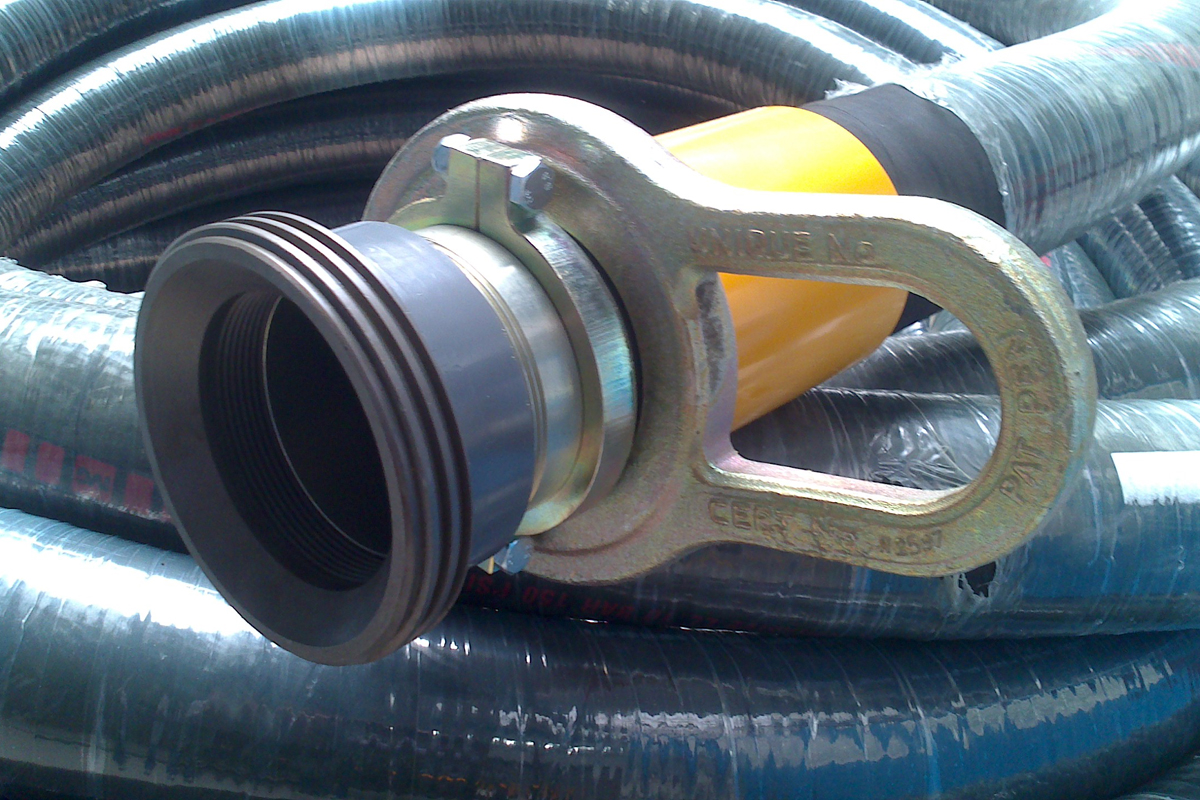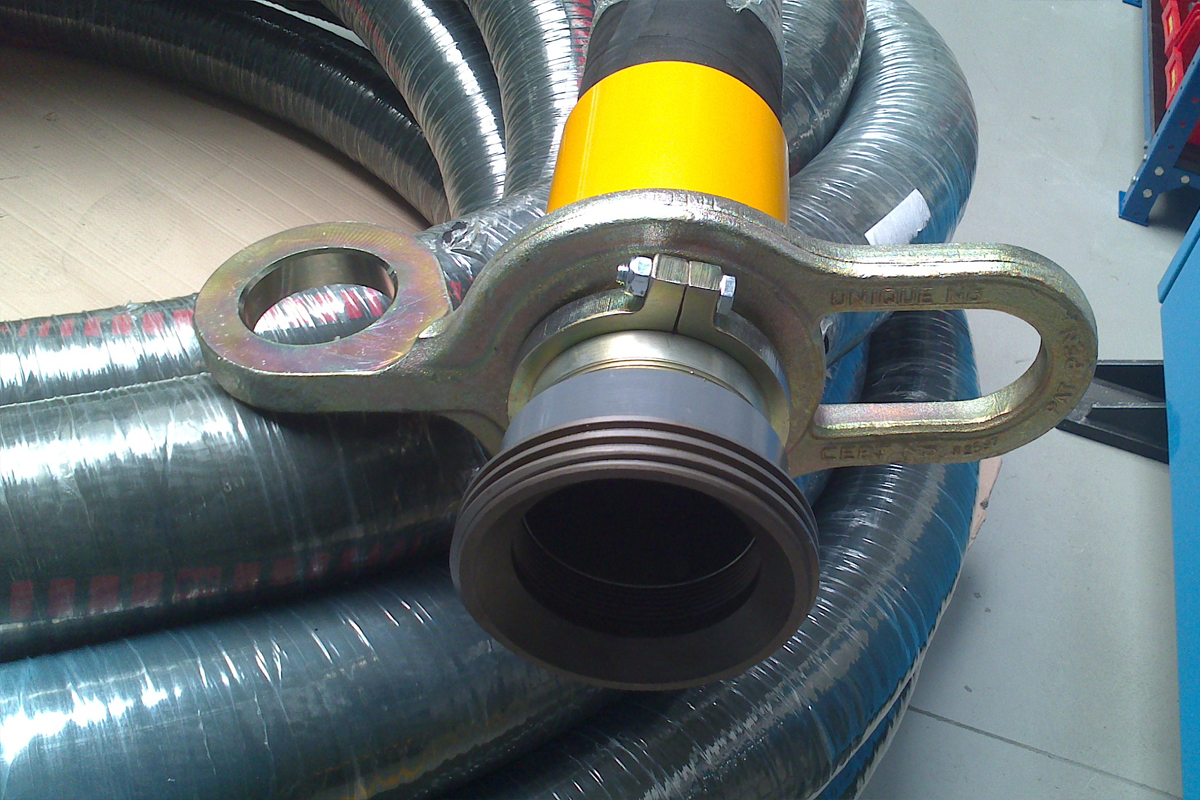Internal swaging allows permanent and safe fitting-hose connection ensuring full and unrestricted flow through the fitting of a flexible hose assembly. The fitting is internally expanded by pulling a hardened tool of the same size as the hose bore, called a dolly or a plug, down the inside of a hose tail. The compressive force exerted on the hose wall by the hose tail causes the hose material to flow into the serrated cavities of both hose tail and ferrule. As a result, a permanently attached, secure mechanical bond is achieved. The whole process is the opposite to the traditional external crimping.
The main advantage of internal crimping over external crimping is the increase in a flow rate, because:
- when externally crimped, the hose tail of a fitting (inserted into the hose) limits the flow diameter by the thickness of its wall;
- when internally crimped, the wall of the hose tail is entirely pushed into the hose, the inside diameters of both the hose and its fitting are the same.
The bigger the flow rate, the shorter the reloading time – that makes the internal swaging method cost-effective.
Another advantage is the lack of obstacles and no turbulence at the end of a hose tail which is crucial for the transfer of dry and loose or semi-fluid products (granules, grain, cement, concrete, etc.). The method can be used DN300). It is particularly recommended for water and air hoses, fuels and other petrochemical products, delivery hoses for dry media, and for foodstuffs.
The maximum working pressure for internally crimped fittings is 30 bar for 2” to 6” fittings, 20 bar for 8” and bigger fittings. Maximum working pressure of the complete flexible hose assembly is limited by the working pressure of hose connections (e.g. PN 16 flange) and by working pressure of the hose.


